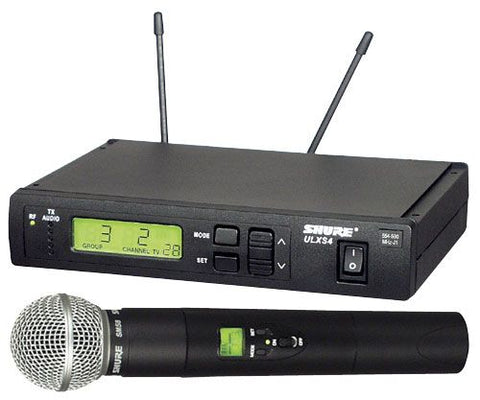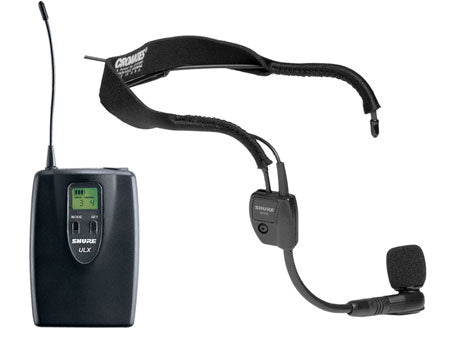Wireless Microphones 101
Hello everyone, it's Mike Turner again reporting from ProSound and Stage Lighting. Today, we're gonna be talking about something other than lighting. We're gonna be talking about wireless microphones. I'm not gonna call it a wireless microphone 101, but it is going to be very informative. I wanna make sure that you understand the differences between the various types of microphones, why some of them are a hundred dollars, why some of them are two and three thousand dollars, and what you get for your money when you invest in a wireless microphone.
The first thing that I want to make sure that you guys were asking yourself is will I be using this microphone to generate income? Whether or not you use that income to pay your bills, or whether or not use that income to put back in your business doesn't necessarily matter. If people are paying you money, expect professionalism. And there's absolutely nothing worse than somebody being on a microphone and having it cut out or even having cross frequencies come through when you hear another person talking from another wireless system that's--has nothing to do with what you're trying to project.

One thing I wanted to show you guys the differences between wireless microphones is basically just that there's a built-in transmitter. If you notice, this is your traditional handheld microphone. The actual part here that picks up your voice is located here. This is just metal or aluminum that gives you something that you can hold on to. That's it. This is called the windscreen. Gonna notice the same thing here. Part that picks up your voice. This section here basically is the same thing as this, minus the handle. Reason being, in the two, this is the actual transmitter.

This is also a transmitter. This is called a bodypack transmitter. The microphone that I'm using is actually attached to my shirt. This is called a lavalier microphone. The microphone is actually right in here. There is a cable that goes into the transmitter here, which has the same components that you would find in the base of this handheld. And again the microphone here, microphone there. You'll see lots of different types. For instance, this body pack could have a cable going into a headset mic. That's something that's actually pretty common.
These are called receivers. What they're designed to do is to receive the audio signal that's coming from the handheld microphone, or the body pack, or whatever and actually convert them to a format that's able to be played over a loudspeaker or a PA system. You'll see there's various different types here. You'll see a single, a dual, and a dual in various different types of singles as well.

So one thing that I also want to make sure that you guys understood is the various different types of microphones in terms of wireless and how they're going to affect your performance. There's something that's going to be called non-diversity which uses a single antenna. Often times you won't even see the antenna. It's going to be built inside the receiver itself. Then there's something called diversity which we use two antennas. That is where you have two components that are designed to receive RF frequency and transmit them to the receiver so they can be turned into audio. Another thing that you guys are going to want to look for something called true diversity. True diversity is probably going to be the best type of wireless microphone system that you can get to date, main reason being you have two antennas just like normal diversity, except they work independent of each other. Where this comes in handy if you have two antennas doing the same thing, if one antenna can't seem to find enough signal to work, chances are the second one's not either. When you have two antennas working independent of each other, if this one is malfunctioning, the second antenna acts as a fail-safe for the other, thus giving you a lot more reliable system.
Alright, so now we're gonna talk about the really important stuff. I'm gonna assume I'm talking to a lot of professionals that use these microphones as part of their business, whether it be a church, school, mobile DJ, presenter, all these jobs all require dependability on your wireless system. And honestly, there is nothing that's going to be more dependable than your traditional handheld mic, but there's gonna be scenarios where you don't want to be walking around with the cable. You're going to trip up on it, you know wireless guitar players use them so that they can run around the stage and act like a monkey and not have to worry about tripping on the cable and whatnot. The need is gonna be there, so you're gonna end up needing a wireless microphone at some point or another.
Today there are three common types of wireless microphone systems. There's VHF which stands for very high frequency, there's UHF which stands for ultra-high frequency, and as of late, we now have digital systems. One thing that would probably advise doing if you have the opportunity is trying to go with the UHF wireless microphone system. There's not necessarily anything wrong with the VHF, it's just the UHF has a much, much wider frequency band. Just to give you some tech specs on this, UHF frequencies operate between 450 megahertz to 952 megahertz, giving you a 502 megahert range. VHF operates between 89 megahertz to 216 megahertz giving you only 127 megahertz range. So again, UHF 502, VHF 127. You can clearly tell that the UHF has a lot more frequencies that it can grab to actually make sure that you have a lot of dependability when using a UHF system.
So if there's any one thing I want to make sure you guys take away from this video, it's going to be the next part, so kinda pay attention. The most important part to really look for in a wireless microphone system especially when you're a professional is to look for something that's going to be frequency agile. Now that's not a specific term, that's just something that we use here. Some wireless microphones have a fixed frequency that it's going to operate on, which means you can't change it. So if for some reason you're in a scenario where that frequency is getting interference, you have no ability to change that. just to give you an example, imagine buying a new car that comes with a nice radio in it. You turn on to a radio station; it sounds great in your driveway. You start to drive away from your driveway and all the sudden you start getting some other channel in another language or, or something that you didn't want to hear. Imagine not having the ability to change that channel. That's how a single channel wireless microphone system works. It's not necessarily bad because if that single channel works great for your application then awesome, you're not gonna run into any issues. I myself and I think many professionals want to have the ability of grabbing another frequency in the event that there is interference. Now the next thing you wanna try to pay attention to is how many frequencies your system is able to grab. Some wireless microphone systems between the two and six-hundred-dollar range can pull from as many as ten different frequencies, up to nine hundred and eighty something. So as you can tell with wireless microphones you really get what you pay for.



